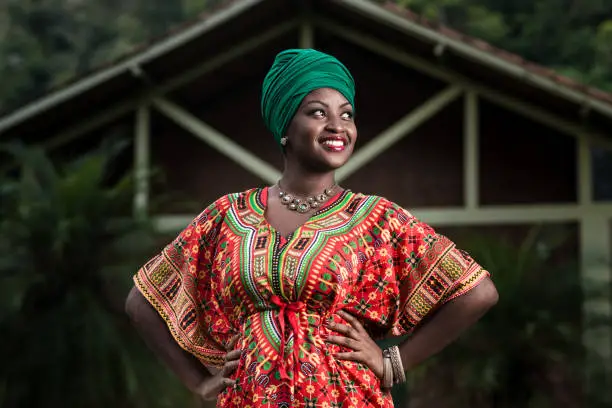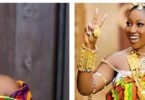Clothes in African refer to the traditional clothing worn by the people of Africa. Different tribes in Africa pride themselves on their dressing, worn mostly on ceremonies and special occasions. There are many African dress styles and fabrics that play a big role in fashion. It often reflects the society and the status of individuals or groups within that community.
Table of Contents
History of African Clothes
Africans rarely needed clothing for warmth or protection because of the warm and hospitable climate. Men wore a loincloth or apron, while women wore wraps around their waists or breasts, and scarification and paint ochres on the rest of their bodies. They mostly made these early forms of clothing from bark cloth, furs, skins, and hides.

Clothes in African. Photo/Africa Imports
Women wrapped the barkcloth over the belt to hide the front of their body, while men tied it around a belt and passed it between their legs. They used raffia for grass skirts and stitched together various pieces of bark cloth. These are the ancient clothes in African.
Stoneage men got barkcloth by removing bark from trees and pounding it using a rock until thin and malleable. To get larger pieces, they would weave little sections together with skins or raffia. Sometimes bark cloth was decorated with patterns.
Adornment of clothes came with fashioning jewellery and headgear from seashells, bones, ostrich eggshell pieces, and feathers.
Africans, later on, developed different weaving techniques using Fibres such as cotton, raffia, silk, and wool. Woven and decorated textiles used for African clothes became a reflection of status, socioeconomic standing, culture, environment, and climate.
What do African Colours Symbolize?
The demand for African dresses lately has gone high in different parts of the world. Clothes in African style is a unique way for many to celebrate their tradition and culture.
It’s a chance to pay tribute to the motherland’s history and beauty. It’s far more than a fashion statement. Designers don’t make clothes simply for appearance’s sake. colour, symbol, and even shape used to have a special meaning or purpose.
African clothing is a symbol of status, creativity, and allegiance to African tribal roots. For centuries, the continent has experienced turmoil followed by liberation and Africans reflected this in the colours that are intrinsic to African life.
Below is a list of some of the most used African colours and their meaning as shown by clothes in African.
Warm Colours
Warm colours such as red, orange, purple, and yellow make beautiful African clothes. These extremely bright and vibrant African colour combinations make stunning outfits.
Western Africa likes warm colours in fabrics such as the fabrics Berber, Bogolan, and Aso Oke. Using warm colours in dresses makes them look incredible and also has a profound meaning behind them.

Clothes in African. Photo/Pinterest
Red
The red colour represents tension in the political or spiritual world and is viewed as the colour of blood.
Purple
African fashion often uses purple, symbolising the essence of femininity. Purple is a deep and rich colour that represents the strong and beautiful nature of womanhood.
Yellow and Gold
Yellow and gold are extremely popular, showing wealth and riches, spiritual purity, fertility, beauty, and the precious nature of life.
Cool Colours
Cool colours include blue and green, representing nature in African cultures. However, each has its specific meaning in clothes in African.
Blue
Blue is the colour of harmony and love. It shows the importance of peace and togetherness. It also represents the sky. Southern countries of Africa use Blue fabrics in Leteisi and Shweshwe.
Green
Green is a natural colour that shows growth, prosperity, and life. Green can relate to the spiritual growth and development of an individual and nature, such as the agricultural rebirth of the land, as the crops bloom with a new season.
Neutral colours
Africans also like using neutral colours like white, black, grey, and silver. White means purity and spirituality. Central Africa often uses neutral colours incorporated in the fabrics Ankara and Kuba Raffia.
Black
Often used for mourning, the color black has profound spiritual energy. The color also represents other meanings, such as maturity.
Silver
Silver is extremely peaceful and is associated with the moon. It represents a range of emotions, such as joy and peace.








